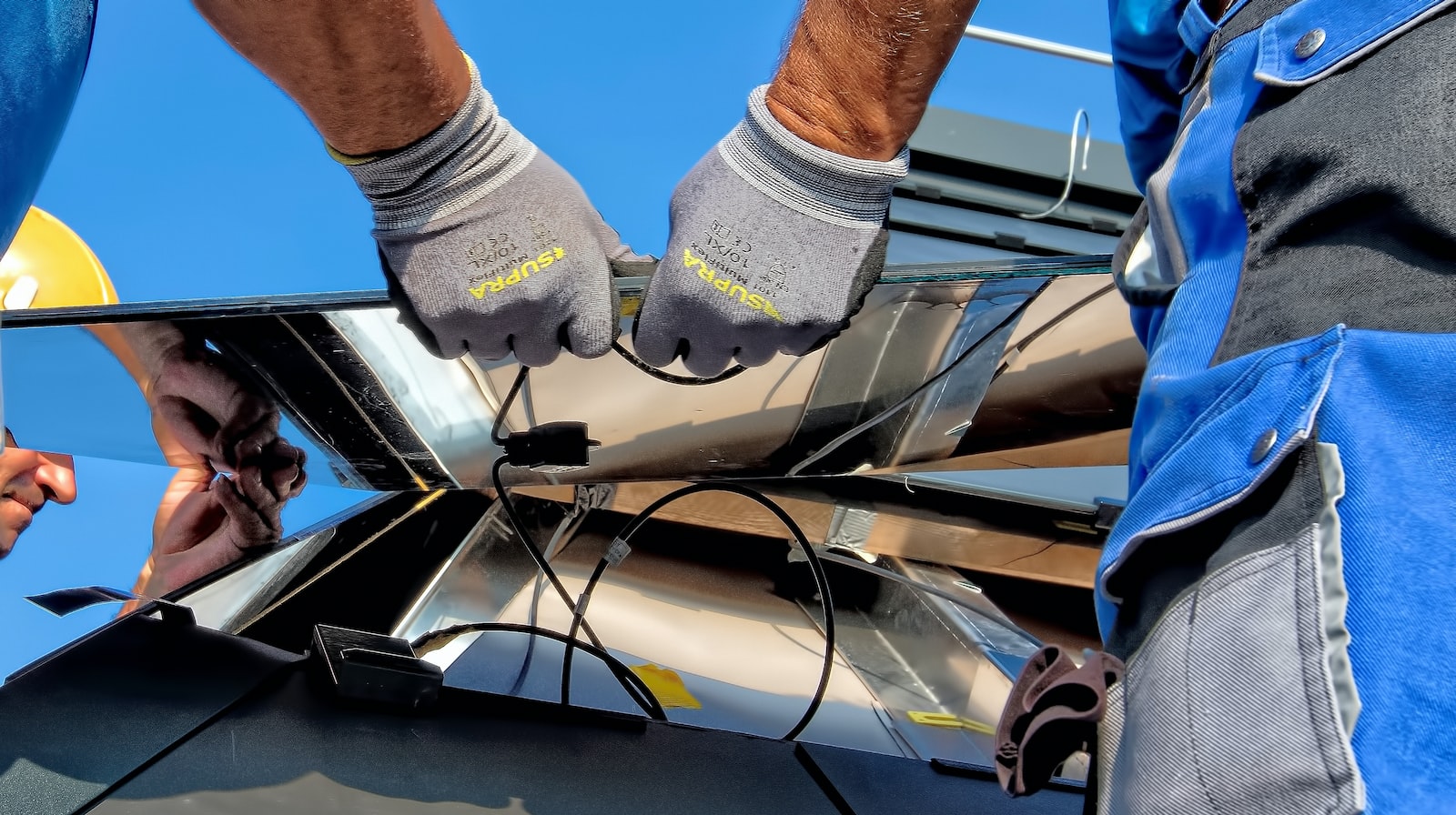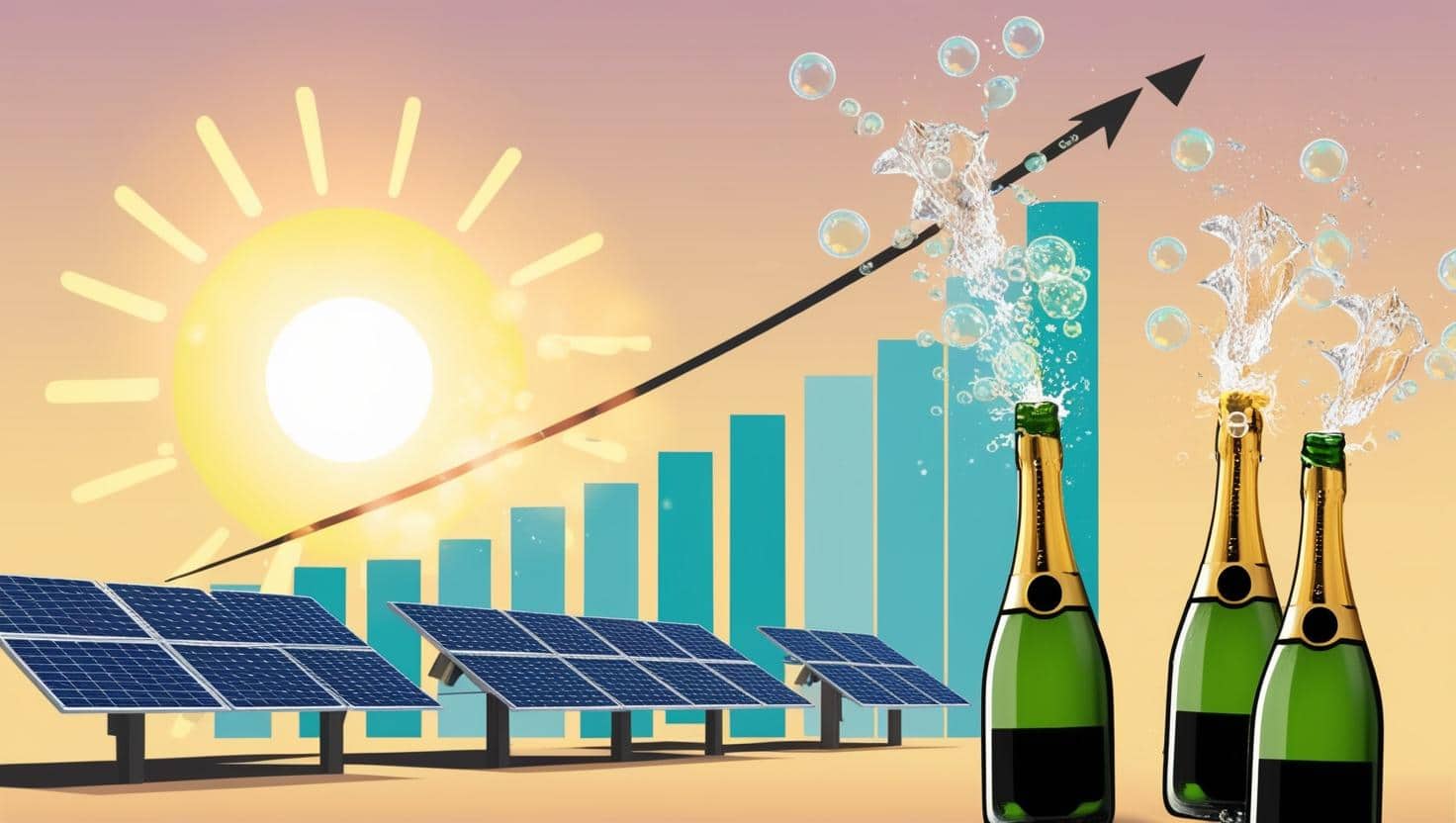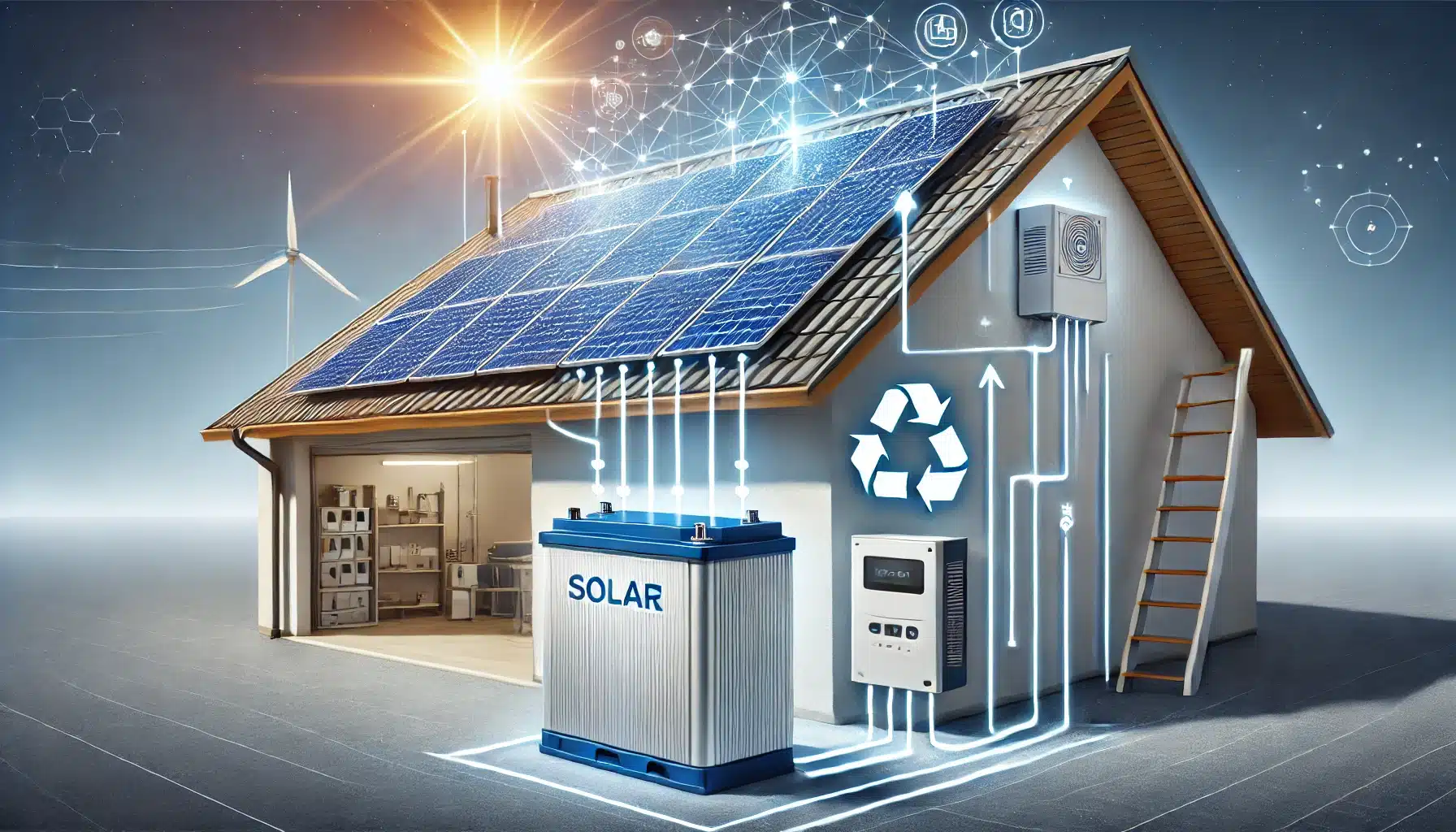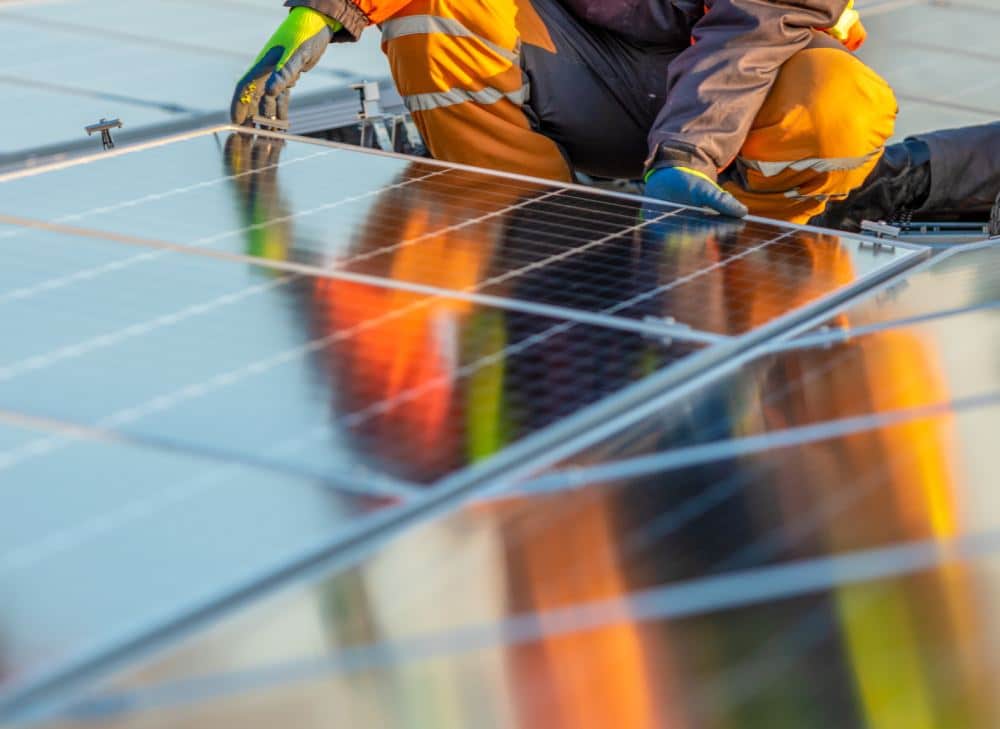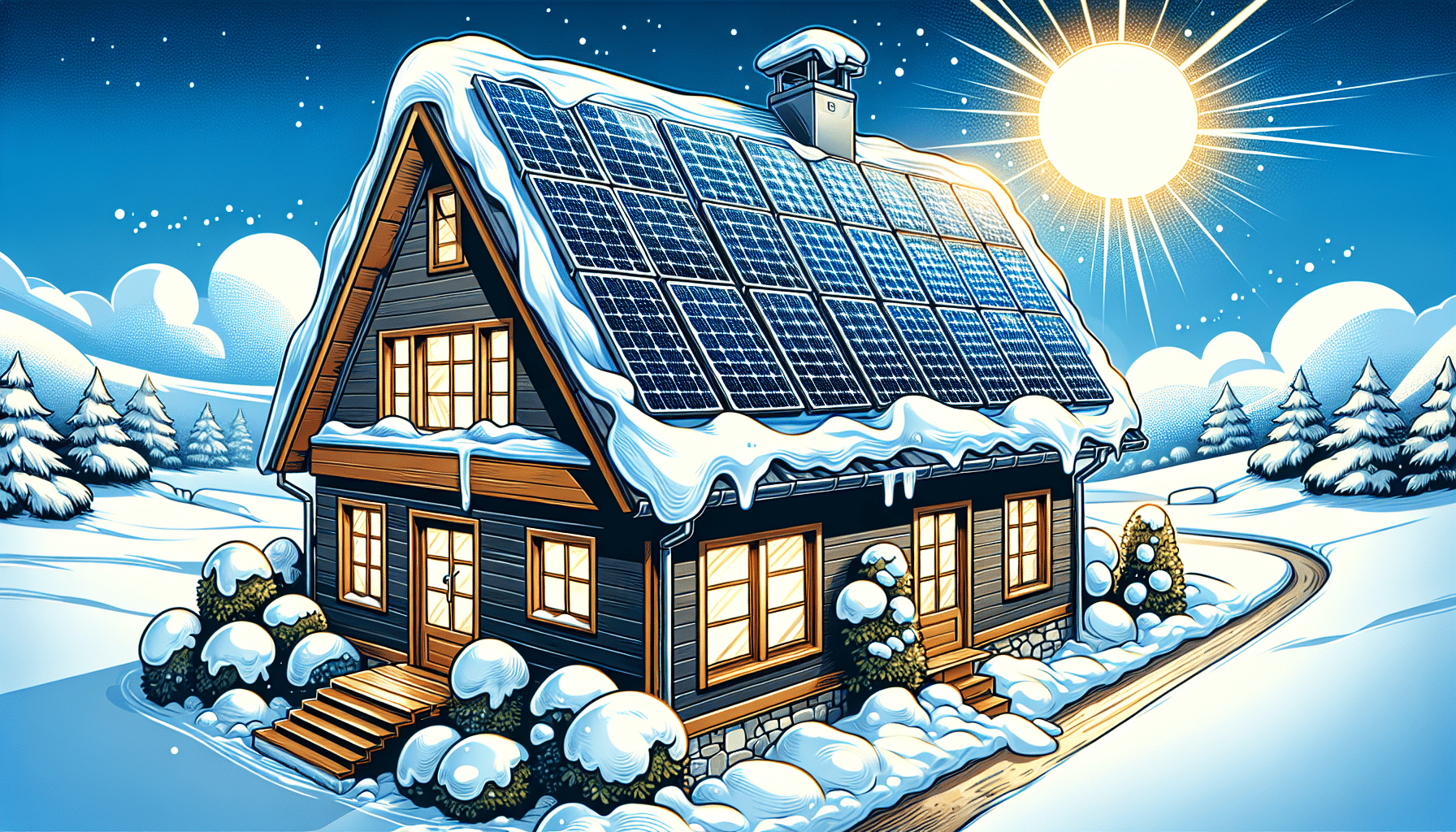Key Takeaways
- Federal and state financial incentives, including a 30% federal solar tax credit and various state and local rebates, significantly reduce the upfront costs of solar installations, enhancing the financial viability of switching to solar energy.
- Solar panel prices for a 6-kW system range from $13,620 to $26,686 in 2024, with costs influenced by system size, installation location, and available financial incentives.
- The main types of solar panels—monocrystalline, polycrystalline, and thin-film—vary in cost and efficiency, affecting overall investment and suitability for different energy needs and budgets.
Current Solar Panel Prices
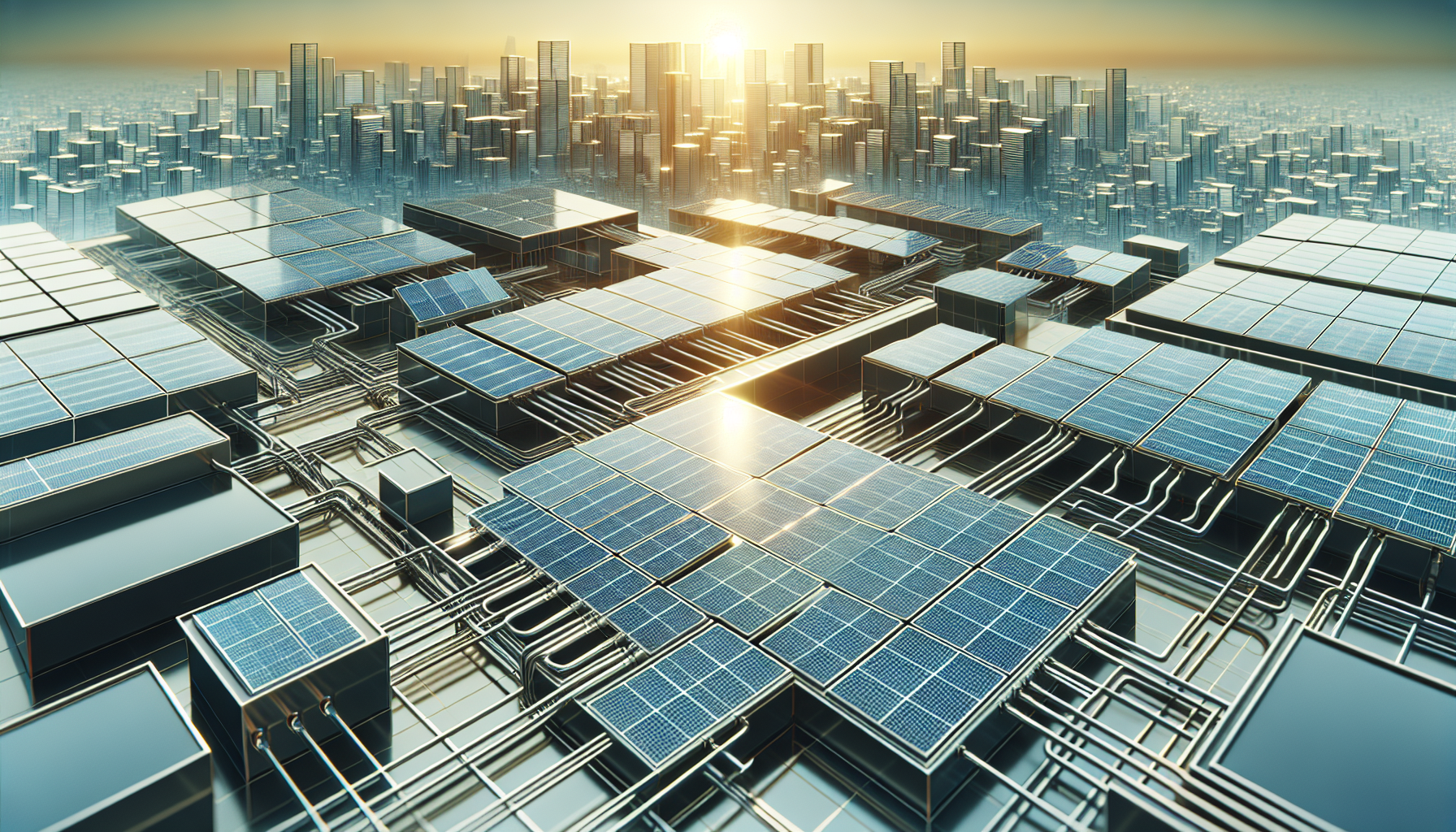
As we stand in 2024, the solar panel market presents a dynamic pricing landscape that hinges on several variables. The solar panels cost for a standard 6-kilowatt (kW) solar panel system ranges from $13,620 to $26,686, with the national average hovering around $2.82 per watt. This spectrum of solar panel costs reflects a blend of technological advances and market trends that have shaped the industry over recent years. The cost per watt, a critical measure of solar investment, has settled within a range of $2.40 to $3.60, inclusive of solar panel installation costs. For an individual solar panel, expect to spend between $200 and $315, while premium options can escalate to $50,000 for the entire system.
Despite the broad pricing brackets, factors such as the specific system size, the state of residence, and the chosen financial incentives significantly dictate the final outlay. For instance, a 10-kW system—a common choice for residential solar panel systems—can see a fluctuation in price from $24,300 to $36,200 before accounting for the generous federal solar tax credit, which can reduce the burden by 30%. Delving into the finer details, such as the type of solar panels installed, is the next step in understanding the investment required to harness solar power and how much do solar panels contribute to the overall cost.
Cost Breakdown by Solar Panel Type
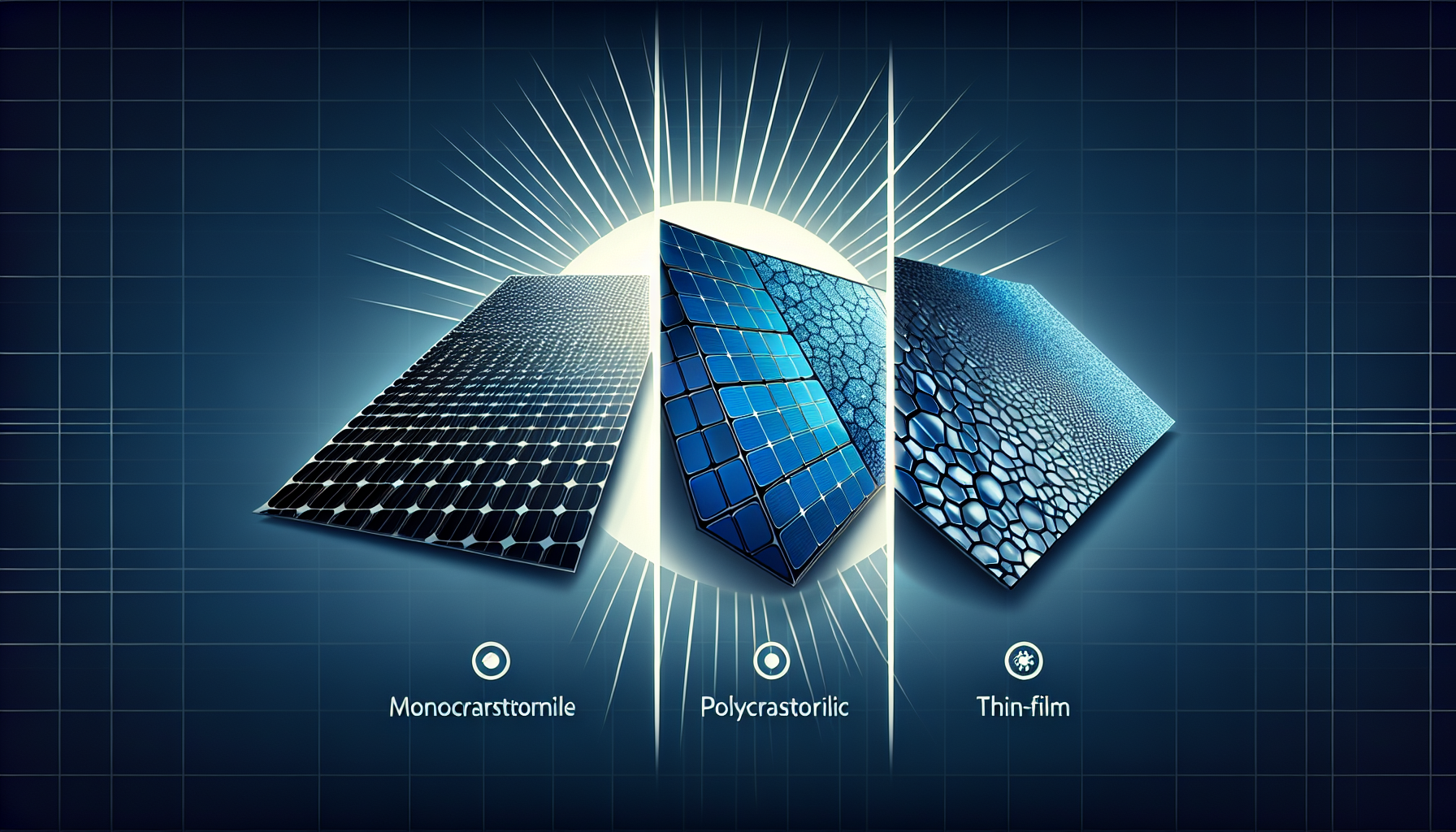
Embarking on a solar energy journey necessitates an understanding of the different types of solar panels available and how they affect the bottom line. The trio that dominates the market – monocrystalline, polycrystalline, and thin-film – each carry unique price tags and efficiency levels that play a pivotal role in tailoring a solar panel system to one’s budget and energy needs.
There are three main types of solar panels:
- Monocrystalline solar panels: These panels have sleek aesthetics and top-tier efficiency, but they come with a higher price tag.
- Polycrystalline solar panels: These panels strike a balance between cost and performance.
- Thin-film solar panels: These panels are known for their affordability and serve as an enticing entry point into solar energy systems.
Let’s delve into each type and discern their financial implications.
Monocrystalline Solar Panels
Monocrystalline solar panels, characterized by their uniform dark appearance and high efficiency, are often deemed the gold standard in solar equipment. These panels have the following advantages:
- They have a high efficiency in converting sunlight to electricity.
- They are suited for smaller roofs where space is at a premium.
- They can generate more power per square foot, allowing homeowners to maximize their solar energy production within a limited area.
Although monocrystalline solar panels may initially strain the wallet, their superior performance often justifies the investment.
Opting for monocrystalline solar panels can lead to fewer panels required to meet energy needs, translating to potential savings in installation costs and space utilization. While the initial cost of these panels might raise eyebrows, the long-term benefits—reinforced by the federal solar tax credit—can illuminate a path to a brighter, more cost-effective future for those seeking to invest in solar power.
Polycrystalline Solar Panels
In the realm of polycrystalline solar panels, affordability meets practicality. With costs ranging from $0.75 to $1 per watt, these blue-hued panels offer a more wallet-friendly alternative without compromising significantly on performance. The manufacturing process, which involves melting fragments of silicon crystals together, results in a distinct mosaic-like pattern and a slightly lower efficiency compared to their monocrystalline counterparts.
For those looking to balance cost with performance, polycrystalline panels serve as a compromise. While they may require more space to produce the same amount of power, the reduced price point can make them an attractive option for larger installations or for homeowners working within a tighter budget. The decision between monocrystalline and polycrystalline solar panels ultimately hinges on one’s specific energy needs, space constraints, and financial considerations.
Thin-Film Solar Panels
Venturing into the territory of thin-film solar panels, we encounter the most budget-friendly option in the solar panel family. Priced between $0.40 and $1.50 per watt, thin-film panels offer an economical entry point for those interested in adopting solar energy without a hefty upfront investment. These lightweight and flexible panels are manufactured using amorphous silicon or other photovoltaic materials, which allows for a variety of applications beyond traditional rooftop installations. Some advantages of thin-film solar panels include:
- Lower cost per watt compared to other types of solar panels
- Flexibility, allowing for installation on curved surfaces or irregular shapes
- Lightweight design, making them easier to transport and install
- Better performance in low-light conditions compared to crystalline silicon panels
Consider these factors when deciding if thin-film solar panels are the right choice for your solar energy needs.
Ideal for small-scale projects such as powering RVs or supplementing energy needs in certain commercial settings, thin-film panels cater to niche markets where cost sensitivity is paramount. However, their lower efficiency and durability compared to crystalline-based panels may necessitate a more extensive installation to meet the same energy production goals. When considering thin-film solar panels, it’s crucial to weigh the immediate cost savings against long-term performance and potential replacement needs.
Factors Influencing Solar Panel Prices
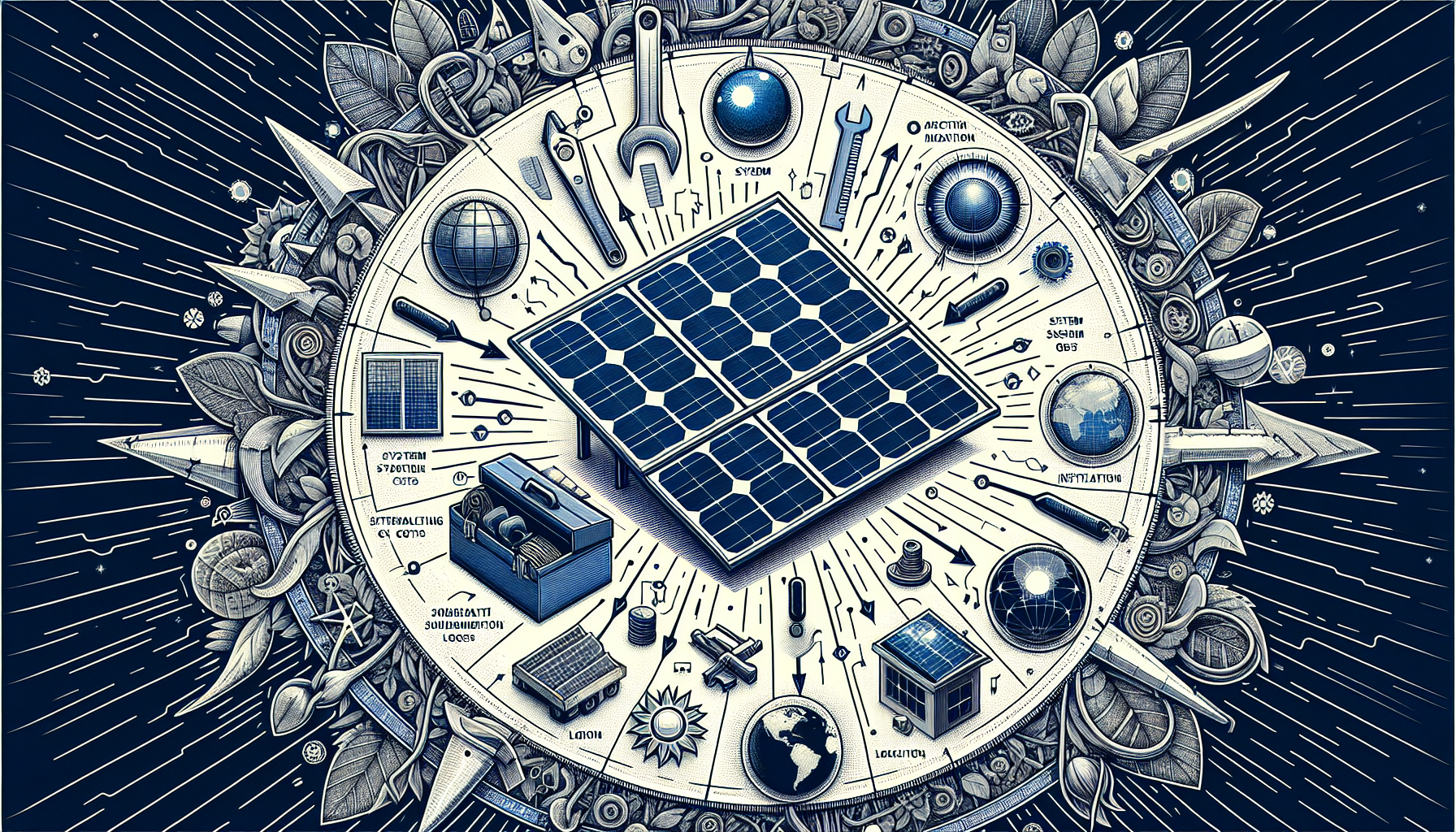
As we peel back the layers of solar panel pricing, a myriad of factors emerge that can sway the final tally. Key influences such as:
- system size
- energy requirements
- installation complexities
- geographic location
converge to sculpt the cost landscape. Moreover, the solar company chosen for installation, the type of mounting system, and the presence of local incentives can each leave an indelible mark on the investment required for a residential solar panel system.
With this in mind, let’s explore how specific factors such as system size and energy needs, installation costs, and location intricacies can shape the cost of embracing solar energy.
System Size and Energy Needs
Determining the appropriate system size for a solar energy system is not a task to be taken lightly. It is a balancing act that weighs the household’s energy consumption against the desired level of energy production, ensuring that neither an oversized system burdens one’s finances nor an undersized one fails to meet energy needs. Whether the goal is to offset a portion of energy usage or to sell surplus energy back to the power grid, the system size must be tailored to align with these objectives.
A larger solar panel system might come with a steeper initial price tag, but it can also unlock greater long-term savings by covering a more significant slice of the household’s energy consumption. Conversely, a smaller system may be more budget-friendly upfront but could lead to missed opportunities for savings over time. It’s a delicate equation that homeowners must solve to ensure their solar investment aligns with their energy ambitions and financial constraints, making it essential to consider the average solar system size for their specific needs.
Installation Costs
The journey from purchasing solar panels to basking in the glow of solar-generated electricity is paved with various installation costs. Some of these costs include:
- Labor expenses, often representing a substantial portion of the total cost
- Soft costs such as permitting, sales and marketing, and the intricacies of the installation itself, which can accumulate to form 65% of the total solar investment
- Additional expenses and complexities introduced by the architectural peculiarities of one’s abode, such as roof type and angle, especially if structural modifications are necessary for optimal panel placement
Before panels can grace your rooftop, a litany of components must come together, including:
- the racking system
- the heat sink
- the charge controller
- and more
Each of these components contributes to the installation costs. It’s crucial for homeowners to ensure their residence is ready to embrace solar panels, taking into account factors like roof size and electrical panel conditions, to avoid unexpected financial surprises during the solar panel installation process.
Location and Sunlight Exposure
Where one resides casts a significant shadow over the efficiency and cost-effectiveness of solar panel installation. Sunlight, the very currency of solar energy systems, varies greatly across geographic locations, influencing both the cost and the amount of energy solar panels can produce. The orientation and pitch of one’s roof, potential obstructions that cast shade, and even local utility policies can all interplay to either bolster or hinder a solar panel system’s performance.
A solar array’s placement is pivotal, with south-facing panels typically harvesting the most sunlight. However, additional factors like installation angle and shading also play crucial roles in determining the system’s overall energy output. Homeowners must consider these variables carefully to ensure their solar panel system is not just an aesthetic addition but a robust and efficient generator of renewable energy.
Additional Costs to Consider
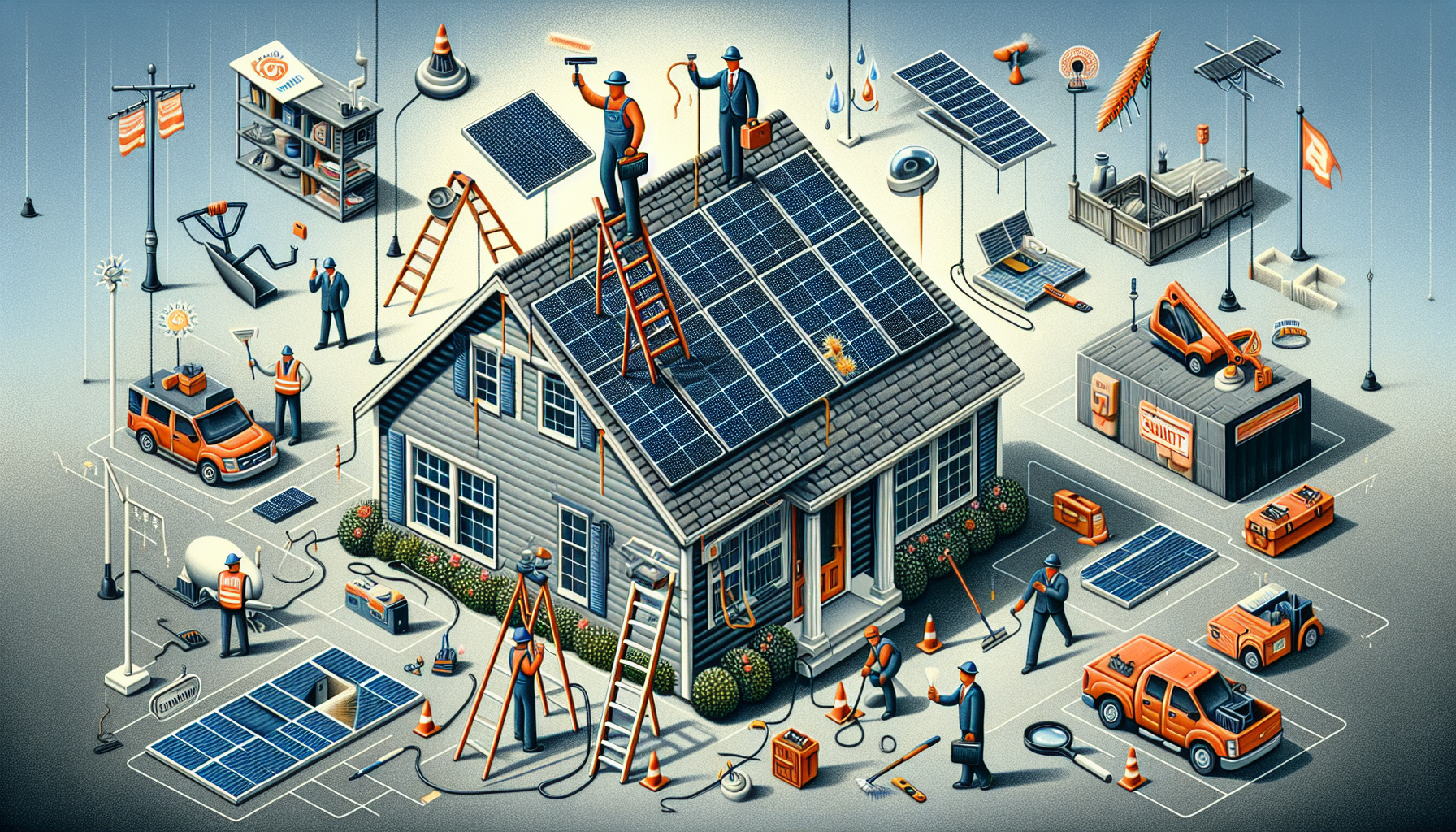
Venturing into solar energy is not solely about the initial setup costs; there are additional expenditures that can influence the overall financial commitment. These ancillary costs include:
- Upkeep and cleaning to ensure peak performance
- Insurance and monitoring services to safeguard one’s investment
- Potential repairs or replacements that may arise over the system’s lifespan
Understanding these expenses is vital for a comprehensive perspective on the total cost of solar ownership.
Maintenance and Cleaning
Maintaining a solar panel system in top condition is not a Herculean task, but it is an essential one. Over time, panels may gather dust, debris, or other residues that can obscure the panels and hinder their ability to efficiently convert sunlight into energy. Regular cleaning, ideally two to four times annually, can keep the panels operating at their best. The frequency of cleaning might vary based on local environmental conditions, such as areas prone to heavy dust or frequent bird activity.
Professional cleaning services can command fees ranging from $150 to $330 per visit, but for those who prefer a hands-on approach, DIY cleaning with a soft sponge and water can be a more economical choice. Whichever route one chooses, regular maintenance and cleaning are non-negotiable for ensuring a solar panel system’s longevity and efficiency.
Insurance and Monitoring
Insurance and monitoring are two elements that can sway the cost of maintaining a solar panel system. While solar panels can bolster a home’s value, this increase may also trigger a rise in homeowner’s insurance premiums. Moreover, some companies may levy additional charges for the peace of mind provided by system monitoring services. It’s prudent for homeowners to consult with their insurance provider to understand any changes to their policy post-installation.
Monitoring is a critical service that allows homeowners to keep tabs on their system’s performance, ensuring it operates seamlessly and flags any issues promptly. Some solar companies, like Elevation Solar, extend complimentary monitoring services, adding value to their offerings and potentially influencing a homeowner’s choice of installer.
Repairs and Replacements
Despite their durability, solar panels are not immune to damage. The costs for repairs can range from a few hundred dollars for minor issues such as small cracks, to $1,700 or more for more extensive damage. Labor costs for these repairs typically hover around $100 per hour, adding to the financial considerations. Additionally, if roof repairs are necessitated by solar panel damage, homeowners can expect to add approximately $800 to the total cost.
In the case of thin-film solar panels, which generally have a shorter lifespan of 10 to 20 years, the need for replacements can arise sooner, further impacting the overall investment in the system. These additional costs for repairs and replacements should be factored into the total financial outlook when considering solar panels, ensuring a realistic assessment of the long-term costs associated with solar energy.
Financial Incentives and Savings

The allure of solar energy is not only its environmental benefits but also the potential financial rewards. Various federal and state incentives, including tax credits, rebates, and grants, can significantly reduce the initial costs of solar panels, brightening the prospect of a solar investment. Moreover, the ability to sell excess solar energy back to the grid through net metering or Solar Renewable Energy Credit (SREC) markets can turn a solar panel system into a revenue-generating asset.
Let’s dive into the diverse landscape of financial incentives and the long-term savings they can afford.
Federal Solar Tax Credit
One of the most significant catalysts for solar panel adoption is the federal solar tax credit, an initiative that allows homeowners to offset 30% of their solar installation costs. This lucrative incentive is available for systems installed between 2022 and 2032, with no cap on its value, making it an enticing proposition for those considering solar panel installation. For example, a homeowner investing in a 10-kW solar panel system at the national average price could see their system cost reduced to $22,022 after this tax credit.
It’s essential to note that this tax credit is only available to those who own their solar systems outright. Thus, those who lease their panels or enter into a Power Purchase Agreement (PPA) are not eligible to benefit from this particular tax incentive. This distinction is a critical consideration when evaluating the financial pathways for installing solar panels, as it can significantly influence the overall cost and savings involved in the process.
State and Local Incentives
Beyond the federal landscape, state and local incentives further sweeten the deal for prospective solar panel owners. These incentives can shave an additional $2,500 or more off the cost of solar panels, with some states offering their own tax credits and rebates to encourage the switch to solar energy. Solar Renewable Energy Credits (SRECs) can also provide a substantial financial boon, as homeowners can sell excess energy produced by their panels to utility companies to fulfill state Renewable Portfolio Standards (RPS) requirements. Some of the incentives available include:
- State tax credits
- State rebates
- Property tax exemptions
- Sales tax exemptions
- Net metering programs
- Performance-based incentives
- Solar grants
These incentives vary by state, so it’s important to research what is available in your area.
To navigate the diverse offerings available, the Database of State Incentives for Renewables and Efficiency (DSIRE), supported by the National Renewable Energy Laboratory, is an invaluable resource, providing up-to-date information on local solar incentives. By leveraging these incentives, homeowners can dramatically reduce the upfront costs of solar panel installation, making the prospect of a renewable energy transition not only environmentally sound but also financially astute.
Long-Term Savings
The journey to solar energy is not just about immediate costs and incentives; it’s also about the long-term savings that accrue over the life of the system. By generating their own power, homeowners can drastically reduce their dependence on the grid and, in turn, their electricity bills. In regions with high electricity rates, the solar panels save can be particularly significant, with the potential to recoup the initial investment in a solar panel system within a few years.
The average payback period for a solar system ranges from 6 to 10 years, depending on the initial costs and local electricity rates. With the typical lifespan of solar panels spanning 25 to 30 years, the accumulated savings on electricity bills can be substantial. Furthermore, the minimal ongoing maintenance costs ensure that the savings continue to grow year after year. When viewed through the lens of long-term financial planning, solar panels can offer a compelling return on investment and a hedge against rising energy costs.
Payment Options for Solar Panels
Navigating the financial commitments of solar panel installation is made easier with a variety of payment options available to homeowners. Traditional purchase, solar loans, leasing, and power purchase agreements (PPAs) each offer distinct advantages and considerations. From the immediate benefits of cash purchase to the flexible terms of solar loans, and the low upfront costs of leasing and PPAs, these payment methods cater to diverse financial situations and preferences.
Let’s explore each option in more detail to understand which might be the best fit for your solar aspirations.
Cash Purchase
Opting for a cash purchase of a solar panel system has distinct advantages:
- Owning the system outright from day one, along with all the electrical production and associated incentives
- Maximizing the financial benefits of the investment by avoiding interest payments
- Fully capitalizing on rebates and tax incentives, such as the federal solar tax credit
While it requires a significant upfront expenditure, a cash purchase allows homeowners to reap the full benefits of their solar panel system.
While the initial outlay may be higher with a cash purchase, the long-term savings and increased property value can make this option financially attractive. Not only does it eliminate ongoing payments, but it also offers the potential for greater savings over the lifespan of the system when compared to other financing options. For those with the means to afford the upfront cost, a cash purchase is a straightforward path to solar ownership with clear financial perks.
Solar Loans
Solar loans present an accessible alternative for homeowners who wish to install solar panels without the burden of a large upfront payment. These loans come in several forms, including personal loans, home equity loans, and specialized solar loans, each with varying interest rates and terms. For instance, Fannie Mae HomeStyle Renovation loans offer a high loan-to-value ratio, providing flexible financing options for solar installations alongside other home improvements.
With solar loans, homeowners can spread the cost of their solar panel system over a period of time, making the transition to solar energy more manageable. While this means incurring interest payments, the monthly savings on electricity bills can often offset the loan payments, resulting in a net positive financial situation. Additionally, solar loans still allow homeowners to benefit from tax credits and rebates, further reducing the effective cost of the system.
Leasing and Power Purchase Agreements (PPAs)
For those seeking solar panels with minimal upfront costs, leasing and Power Purchase Agreements (PPAs) are attractive options. Leasing involves paying a monthly fee to a solar company for the use of solar panels, while PPAs entail agreeing to purchase the electricity generated by a solar system at a predetermined rate. Both options relieve homeowners of maintenance responsibilities, as the solar company retains ownership of the system and is responsible for its upkeep.
However, it’s important to note that leasing and PPAs do not qualify homeowners for tax incentives or rebates, as they do not own the system. Despite this, these options can still result in lower energy bills and provide a fixed electricity cost, which can be particularly beneficial in areas with volatile energy prices. Leasing and PPAs are ideal for those who prefer a low-barrier entry to solar energy, without the financial commitment of ownership.
Timeframe for Solar Panel Installation and Payback
The transition to solar energy encompasses not only the financial aspect but also the timeframe for installation and the anticipated payback period. Here are some key points to consider:
- Solar panel installation can typically be completed within one to five days, with most installations wrapping up within three days.
- The payback period, the time it takes for the solar panels to start “paying for themselves,” generally spans between 6 to 10 years.
- This timeframe can vary based on several factors, including the initial investment, the energy production of the system, and the cost of electricity in the homeowner’s area.
Installation Timeline
The road to solar energy begins with a comprehensive initial consultation, where solar installers evaluate your energy requirements and assess your property’s suitability for solar panels. After developing a customized design plan and obtaining the necessary permits—a process that may add a few weeks to the overall timeline—the installation can proceed. The actual placement and securing of the solar panels can be a swift affair, typically completed within one to three days, depending on system size and complexity.
Final steps include an inspection and the green light from the local utility company for grid connection, marking the completion of the solar panel installation journey. This end-to-end process, from the initial assessment to flipping the switch on your solar energy system, is a critical consideration for homeowners plotting their course to renewable energy adoption.
Calculating Payback Period
Understanding the payback period of a solar panel system is essential for evaluating the financial viability of the investment. To calculate this period, one must subtract the value of any financial incentives from the total initial costs and then divide by the monthly savings on electricity bills. This calculation gives homeowners a clear picture of how long it will take for the solar panels to offset their costs through reduced utility expenses.
The payback period varies by location and individual circumstances but typically falls between 6 and 12 years. Factors such as the amount of energy generated by the panels, the household’s energy consumption, and local electricity rates all play a role in determining this timeframe. By calculating the break-even point, homeowners can make an informed decision on whether the upfront costs align with their long-term financial goals and energy needs.
Are Solar Panels Worth the Investment?
As we consider the various facets of solar panel installation and ownership, the question of their worthiness as an investment comes to the forefront. Over the last decade, solar panels have seen a dramatic drop in costs—by about 90%—making them more accessible to a broader demographic. Coupled with technological advancements that have enhanced their efficiency, solar panels now offer a more attractive proposition than ever before.
The true value of installing solar panels extends beyond the initial price tag; it encompasses the potential for lower electricity bills, an increased property value, and a smaller carbon footprint. For households with an average energy bill of $150, the expected electricity savings over a decade can reach upwards of $20,000. Moreover, net metering policies can provide additional financial incentives by allowing homeowners to sell excess energy back to the grid. With these considerations in mind, solar panels can be a wise investment for those seeking not only to reduce their environmental impact but also to achieve substantial financial gains over time.
Summary
In conclusion, the journey through the 2024 solar panel market reveals a landscape of innovation, affordability, and financial incentives that make solar energy an increasingly attractive option for homeowners. From understanding the cost breakdown of various solar panel types to navigating the factors influencing prices, additional costs, and the range of payment options, it’s clear that solar energy is more than just an environmental choice—it’s a savvy financial decision. With the potential for significant long-term savings and a variety of incentives to reduce upfront costs, solar panels stand out as a worthwhile investment for those looking to harness the power of the sun.
Frequently Asked Questions
What is the range of prices for installing a 6kW solar panel system?
The range of prices for installing a 6kW solar panel system is between $13,620 and $26,686 in 2024, with an average cost of $10,200 to $15,200 after tax credits.
How do different types of solar panels compare in terms of cost and efficiency?
Monocrystalline panels are the most efficient but expensive, while polycrystalline panels offer a middle ground in cost and efficiency, and thin-film panels are the most affordable but least efficient.
Can I benefit from the federal solar tax credit if I lease my solar panels?
No, you cannot benefit from the federal solar tax credit if you lease your solar panels, as the credit is only available to those who own the system.
What factors should I consider when choosing the size of my solar panel system?
When choosing the size of your solar panel system, consider your energy consumption, potential grid energy selling, and available installation space. It’s important to tailor the system size to meet your energy needs without being too big or too small.
How long does it typically take to install solar panels, and what is the average payback period?
Solar panel installation typically takes between one to five days, with most installations completed within three days. The average payback period, where the savings from the solar panels cover their costs, is between 6 to 10 years.


